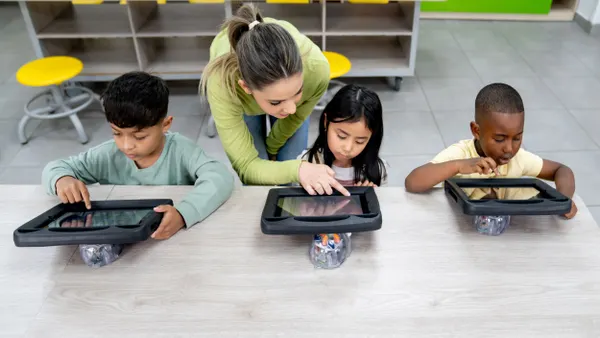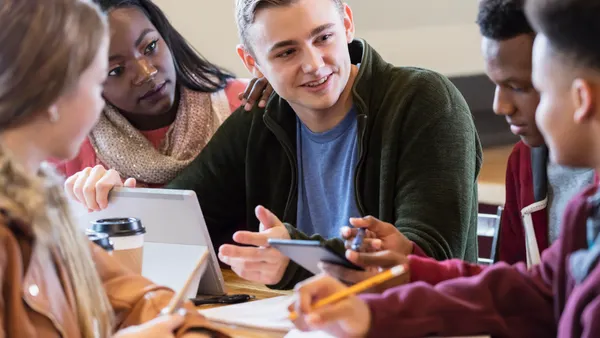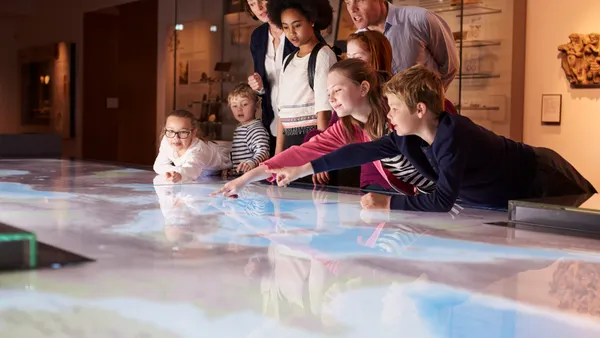Dive Brief:
- Ryan Wheeler started a lunch group with a multi-purpose goal: to bring several 5th grade boys together socially, while also linking a literacy component to the weekly event.
- Wheeler would prompt conversations with simple questions, tying the focus through a book titled "Rules of a Knight," he writes in Edutopia. The boys learned basic social skills, while also being encouraged to treat each other politely and respectfully.
- While they first felt wary of why they’d been asked to join the group, they boys eventually bonded, and as their friendships grew, so too did their confidence in class, Wheeler writes.
Dive Insight:
Taking a lunch break is a luxury even few working adults feel they can afford. Sandwiches are consumed at desks as reports are typed, or meals double as meetings. At some high schools, students can give up their lunch break to double-down on extra classes, while lunch time clubs are popular activities where socializing, meals and activities can happen in tandem.
Using these breaks as an add-on to academics is certainly possible, as long as students don’t feel they’re losing downtime. Lunch groups are a great way to enhance social and emotional learning (SEL) lessons, weaving aspects like respect for others into a literacy component. Holding lunchtime reading clubs could be one avenue, having students meet once a week around a favorite book series, and even suggesting students lead the discussions themselves — with some direction and guidance from teachers.
Administrators who want to encourage these clubs during the day should ensure that teachers don’t try to push academics overtly into the time. Everyone needs a mental breather. Lunch clubs, which potentially can infuse SEL tools into the curriculum, still need to be seen by students as a shift from their academic day.






 Dive Awards
Dive Awards







